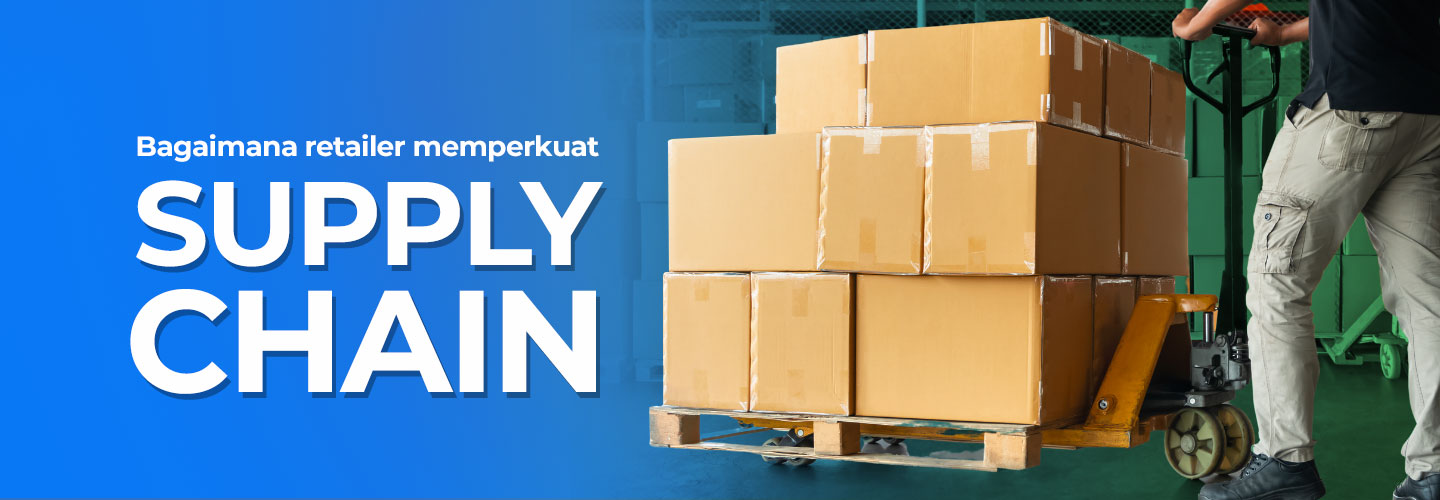How to Improve Supply Chain for Service Optimization

Retail businesses are always under pressure to deliver more products to customers. For this reason, it is important to be able to improve the supply chain in the retail business in order to optimize output and meet customer demand.
A strong supply chain can keep a retail business competitive while providing a real-time picture of the business. You can decide to shift shipping, move warehouses, or optimize inventory according to existing demand.
To improve the supply chain process, you need to optimize various business functions. Supply chain involves procurement processes, inventory control, partnerships with logistics parties, and much more.
How to Improve Supply Chain Processes
When the supply chain improves and is efficient, you can meet customer demand while maximizing profits. You can also avoid delays and cancellations if you carry out process efficiencies as follows.
1. Choose the right strategy
When developing a retail supply chain strategy, the main focus is on the expectations of a particular company. Supply chain optimization often means different things to retailers. Regardless of the strategy chosen, it is important to track a retailer's success by relying on metrics that are clear and aligned with their goals.
For example, a grocery store cut delivery times by 15% to reduce food waste. Luxury fashion brands are trying to halve dead stock by collaborating with exclusive textile manufacturers. With clear and measurable goals, retailers and partners can continue to ensure a smooth supply chain for business success.
2. Invest through technology
Supply chain software can give retailers visibility into customer demand and inventory levels at every step of the product journey. Many retailers choose cloud-based software that collects and consolidates data from every process and department in their supply chain in real-time.
Inventory can be continuously estimated and evaluated to process large amounts of data quickly. You can process data sets using artificial intelligence (AI) and machine learning algorithms to help with the data analysis process.
3. Improve forecasting capabilities
Effective forecasting capabilities can help predict the products that customers are most likely to buy. In the long term, retailers may be able to make future revenue projections, optimize inventory, and avoid excesses and stockouts.
As a retailer, you can also rely on third-party experts to conduct analysis and track market performance. Demand predictions can be used for accurate inventory management. You can also ensure stock availability to take advantage of sales opportunities and optimize storage costs.
4. Consider closer resources
Shipping and transportation costs are the largest part of the supply chain. While many brands have no choice but to import raw materials, others can control shipping and distribution costs from using local ingredients.
Procuring local materials tends to result in faster delivery times for customers. Retailers often partner with local fulfillment centers, dropshipping agents, or third-party logistics (3PL) providers so that the burden of supply chain management does not fall on them.
5. Warehouse system automation
To optimize inventory control, retailers also use automation to handle the movement of products in and out of the warehouse. The aim is to process goods faster, reduce the risk of errors, and lighten the workload of warehouse employees.
Warehouse automation may involve using robots to move heavy packages from one part of the warehouse to a delivery point. Likewise, the use of software for warehouse automation to record inventory movements. Offloading this task to a computer program can save a lot of time.
Retailers can purchase automation technology themselves or partner with third-party services. For example, a retailer might adopt an IT vendor to monitor inventory data or rent an autonomous warehouse robot for a storage management platform.
These are several ways that retailers can use to improve their supply chain to make it more efficient. Supply chain optimization is expected to simplify the flow of transactions between retailers and consumers, thereby maximizing profits for the business. Managers can understand this through the Supply Chain Management program so that its function can run optimally in generating value for producers and consumers.
